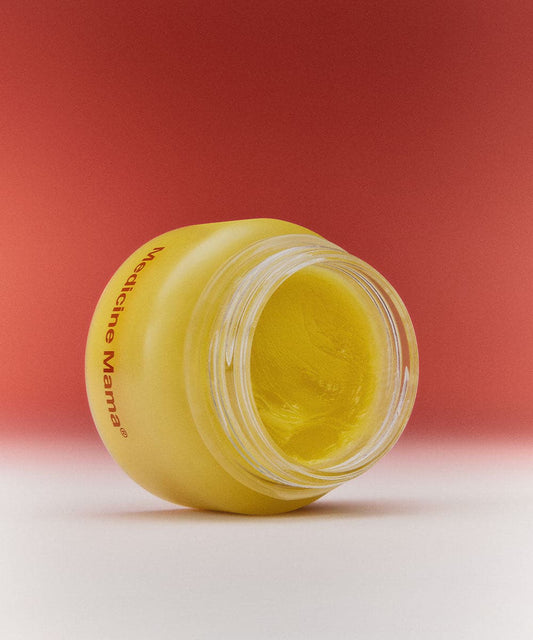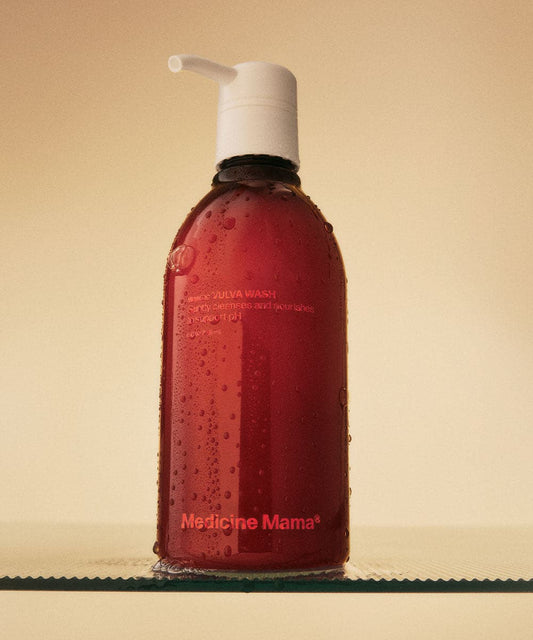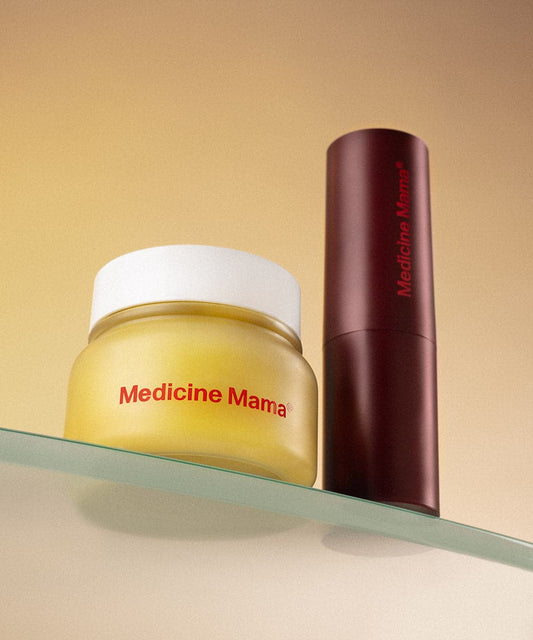
Reviewed by | Dr. Clare Bertucio MD
Nobody wants to think about getting a tear in their vagina or vulva tissues, but it’s an unfortunate possibility for any woman.
Although vulva and vaginal tears are most commonly associated with childbirth, there are many other causes as well. Injuries, dryness due to menopause, and surgical scaring can all lead to vaginal tearing if you’re not careful.
Vaginas are extremely resilient, but they aren’t invincible. When possible, it is always better to try to prevent vaginal tearing by ensuring that your vagina has adequate lubrication and that you are taking precautions when engaging in activities that could put these delicate tissues at risk of injury.
Of course, it’s not always possible to completely prevent vaginal tearing even if you do all of the preventative measures. Depending on the severity of the tear, you may be able to treat it at home while others may require medical intervention and/or surgical repair.
So how do you know if you have vaginal tearing, and when is it considered serious? Keep reading as we explain everything there is to know about vaginal tearing, how to prevent it, and how to treat it if it happens.
What is Vaginal Tearing?
A vaginal tear is a cut or laceration in the walls of the vagina that is caused by some type of injury. Vaginal tears can happen during sex, masturbation, during labor and childbirth, or during certain physical activities such as bicycling or horseback riding.
These tears can be superficial, shallow tears or they can be deep tears. Most women have experienced some sort of superficial vaginal or vulvar tear in their lifetimes. In most cases, you may not even have noticed it because it was so minor.
One of the most common causes of vulvar tears is grooming. If you remove your pubic hair with a razor or through waxing, then there’s a good chance that you’ve accidentally nicked yourself at one point or another.
Shaving and waxing frequently can also cause micro abrasions which can lead to a wide variety of skin infections which can lead to more complicated conditions.
How Common Is Vaginal Tearing?
A study from 2017 showed that 25.6% of women had experienced at least one cut or tear in their vagina or vulva as a result of shaving improperly. That’s 1 in 4 women, so it’s a lot more common than most people think.
If we’re talking about pregnancy and giving birth, then vaginal tearing becomes even more common – 9 out of 10 women experience tearing or a medical incision known as an episiotomy during labor.
Women in menopause or perimenopause may also experience the occasional vaginal tear or cut as well. This is typically due to a lack of lubrication, a natural thinning of the skin of the vagina and vulva, and a lack of elasticity in the skin.
The good thing is that a majority of these types of cuts and tears can be prevented! Perineal massages can significantly reduce the chance of tearing or needing an episiotomy during labor. Likewise, applying a lubricant before sexual activity or using a daily vulvar moisturizer can help prevent vaginal tearing in menopause.
Symptoms of Vaginal Tearing
Because your vagina and vulva are such sensitive areas, it is usually very apparent when you have received an injury to them. However, if the tear or cut is relatively small, then you may not notice until you use the bathroom or try having sex.
The most common symptoms of vaginal or vulvar tears are:
- Pain – the pain can be closer to a mild discomfort in the cut is small or it can be extremely painful if you have a deep tear.
- Burning pain when urinating or when any fluid comes into contact with the affected area.
- Pain or discomfort during sex
- Pain or discomfort when inserting or removing a tampon
- Bleeding or spotting that is not associated with your period. Typically, more severe and prolonged bleeding indicates a more severe tear.
- Itching or burning sensations that do not go away – this can also indicate an infection.
- A tearing sensation
It’s important to keep an eye on the wound for any signs of infection such as discolored discharge or a unusual smell, or if you get a fever, chills, or dizziness. If you notice any of these signs of infection, it’s important that you see a doctor as soon as possible to keep it from getting worse.
The good news is that most vaginal cuts and tears heal exceptionally well with minimal intervention as long as you keep the area clean and dry.
What Causes Vaginal Tearing?
Many things can cause vaginal and vulvar tearing, but the most common causes are sexual activity, childbirth, grooming, and certain skin conditions. Some other causes of vaginal tearing include:
Yeast infections
- Frequently being prescribed steroids for other conditions – steroids can cause the skin to thin causing it to be more susceptible to tearing
- Vaginal dryness – a lack of lubrication due to age, health conditions, or breastfeeding can all lead to an increased risk of tearing. Using a water-based lubricant can help prevent this kind of tearing.
Improperly using tampons – Using tampons that are too absorbent for your flow or improperly inserting or removing tampons can all cause damage to the inner lining of your vagina.Using sex toys too roughly
It’s important to be mindful when you are inserting anything into your vagina or if you are using anything on your vulvar region. The skin in these areas is delicate and too much pressure or being too rough even in everyday things like shaving can cause damage to the area if you are not careful.
Skin Conditions That Can Cause Vaginal Tearing
Many skin conditions can also cause the skin of your vulva and vagina to be more susceptible to tearing and cuts. The most common culprits of vaginal tearing include:
- Lichen sclerosus: A chronic condition that causes thin, patchy, discolored skin on the genital areas.
- Psoriasis: Although not as common on the genital areas, if you have psoriasis on other parts of your body then it may develop on your genitals as well. On the genitals, it appears as pink patches of skin with sharply defined edges.
- Eczema: As with psoriasis, if you have eczema on other parts of your body, then you are more likely to develop it on your genitals as well. On the genitals, it may form a crust that leaks fluids and may be accompanied by a burning sensation.
- Atrophic vaginitis: Most commonly occurring after menopause, this condition causes thinning of the vagina which leads to less elasticity and increased dryness which can lead to vaginal tearing.
- Genital herpes: Can appear as a thin cut on the vulvar area or may appear as clusters of blisters. These blisters can burst and leak fluid and this condition is highly contagious even without an outbreak of blisters.
- Thrush: A fungal yeast infection that causes itchiness and a thick, white, discharge the consistency of cottage cheese coming out of the vagina.
Women who have vaginal or vulvar scarring due to trauma or medical interventions such as surgery or radiation therapy may also be more prone to vaginal tearing due to the existing skin damage.
How to Heal Vaginal Tearing
The treatment for a vaginal tear depends on how severe the tear is and how you obtained the injury. For minor cuts and abrasions, at-home treatments may be sufficient for taking care of the pain and risk of infection.
If your injury is the result of childbirth, repeated tearing due to thinning of the vaginal or vulva skin, or is the result of a sexual injury, then medical intervention may be necessary to ensure that it heals properly.
At-Home Treatments
Shallow tears or cuts can often be treated at home by self-examining the wound and keeping it clean to prevent infection. Taking a shallow, warm sitz bath a few times a day for 10-15 minutes each can help provide relief from pain or soreness.
If that doesn’t help the pain, over-the-counter pain relief can help. However, if the pain persists despite these options, then you may have a more serious tear that you should have your doctor take a look at.
It’s important to avoid touching the area as much as possible as it heals and try not to wear any tight-fitting clothing that could rub against the area and cause further injury if it is on your vulvar area. You should also avoid using tampons or douches, and you shouldn’t have sex until the tear fully heals.
It can be frustrating waiting for a cut or tear to heal, but it is important that you let it take the time that it needs and avoid potentially worsening it. Most shallow cuts or tears take a few days to a few weeks to heal completely.
Medical Intervention
Depending on the severity or cause of your vaginal tear, you may require medical intervention to ensure that it heals properly. While severe tears can be caused by forceful or rough sex, they are more commonly the result of childbirth.
During childbirth, there are four degrees of tears, with one being the least severe up to four being the most severe. The more severe the tear is, the more likely it is that you will need stitches to repair the damage to the area.
These stitches will be dissolvable, meaning that you won’t have to get them removed, and they will typically last around six weeks to give the area time to properly heal. In most cases, the majority of your pain should fade within 2-3 weeks, but everyone heals at different speeds.
Although keeping an eye out for infection is essential for any wound, the risk of infection is higher with more severe tears. If you suspect that your vaginal tear is not healing properly, or is getting worse, make an appointment to see your doctor as soon as possible.
When Should You See Your Doctor About Vaginal Tears?
Although most vaginal tears are superficial and do not require medical intervention, if you are concerned about your vaginal tear, then you should feel comfortable seeking your doctor’s opinion.
If you are experiencing any of the following symptoms, then your vaginal tear may be more severe than you thought. Seek immediate medical attention from your OB-Gyn, primary care doctor, or ER for one or more of these symptoms:
- Fever of 100.4 or higher
- An abnormal smell or discharge coming from the vagina
- Pain that increases or does not seem to be getting better
- Experiencing dizziness, weakness, or fainting after the injury
- Bleeding from the vagina or vulva that is not associated with your period, is heavier than spotting, and does not stop on its own
- The cuts or tears are large, deep, or numerous
- The cuts or tears worsen or do not show signs of improvement after a couple of days
In addition, if you seem to be getting recurring vaginal tears or if your vagina has been more sensitive recently, it may be time to discuss your concerns with your doctor.
In many cases, simply using a water-based lubricant during sex or using a daily vulvar moisturizing cream can help to restore lubrication and elasticity to the vagina and vulvar skin which can help prevent future injuries from occurring.
Finally, if you are the victim of rape, sexual abuse, or sexual assault, seek immediate emergency medical attention. Likewise, if you notice an unexplained vaginal cut or tear on an infant or child immediately seek medical attention for them.
How to Prevent Vaginal Tearing
Although vaginal and vulvar tears can never be 100% prevented, there are certain precautions that you can take to minimize your risks. The most common cause of vaginal tears is sex, so it is important to know how to reduce your risk of vaginal tears during or after sex.
Vaginal or vulvar tearing from sex occurs due to a lack of lubrication, elasticity, or as a result of being too rough. To prevent this, try using a water-based lubricant during sex, and ensure that you are taking the time to engage in foreplay before you move on to the main event.
Go slow and try different positions to see which feels the most comfortable and enjoyable to you, and don’t be afraid to tell your partner if you don’t like something or if something is uncomfortable.
You may also encounter a risk of vaginal tears or cuts at other times as well, such as when you’re on your period. Be careful when inserting and removing tampons and ensure that you are using the right absorbency for your flow. For example, using a too-absorbant tampon on a light day can cause cuts on the inner lining of the vagina.
The main thing to remember is to listen to your body. It knows what it’s doing, and it will tell you if something doesn’t feel right.
What is a Perineal Massage?
Vaginal tearing during birth and delivery is common, but in many cases perineal tear can be prevented or the severity can be lessened by doing some perineal care prior to giving birth.
Perineal massages work by stretching out the muscles of your perineum, the area between your vagina and anus, in preparation for childbirth. Most healthcare practitioners recommend starting this massage between weeks 34 and 46 of your pregnancy and doing it once or twice a week until you give birth.
In as little as 5 minutes per massage, you can reduce your need for stitches in the event of a tear by 10%. Perineal massages may also be able to reduce your chances of needing an episiotomy, or surgical cut made during childbirth to prevent further tearing.
In addition, it can help reduce pain and discomfort during the pushing part of labor! Ask your doctor about all of the benefits of perineal massages and for information on how to do them properly and effectively for the most benefit.
How Our Products Help
Shallow vaginal and vulvar tears and cuts are relatively common in women of all ages, although they become more common as we age. When women enter menopause or perimenopause, the vulvar skin thins and loses its natural elasticity and lubrication as estrogen production decreases.
Our Vmagic Vulvar Balm is an all-natural, hormone-free vulvar moisturizer for preventing vulvar tearing that soothes the dryness of the vulva. We created it to be gentle, without fragrances or other irritants so that it can be used daily to hydrate, moisturize, and provide soothing relief for your most intimate areas. Regular, daily use of our product can help restore vulvar hydration and comfort.
Resources:
https://www.fairview.org/patient-education/116680ENhttps://www.ncbi.nlm.nih.gov/pmc/articles/PMC5710443/https://www.rcog.org.uk/for-the-public/perineal-tears-and-episiotomies-in-childbirth/perineal-tears-during-childbirth/#:~:text=Up%20to%209%20in%20every,are%20minor%20and%20heal%20quickly.https://www.verywellhealth.com/vaginal-cuts-4801166https://www.medicalnewstoday.com/articles/325100#_noHeaderPrefixedContenthttps://rightasrain.uwmedicine.org/life/sex/its-not-just-childbirth-can-give-you-vaginal-tearhttps://www.healthline.com/health/pregnancy/perineal-massage#timinghttps://www.hackensackmeridianhealth.org/en/HealthU/2023/02/23/What-Are-the-Degrees-of-Vaginal-Tearing#.ZD4aVnbMJD8https://my.clevelandclinic.org/health/diseases/21212-vaginal-tears-during-childbirth#:~:text=A%20vaginal%20tear%20(perineal%20laceration,opening%20in%20a%20controlled%20way.



